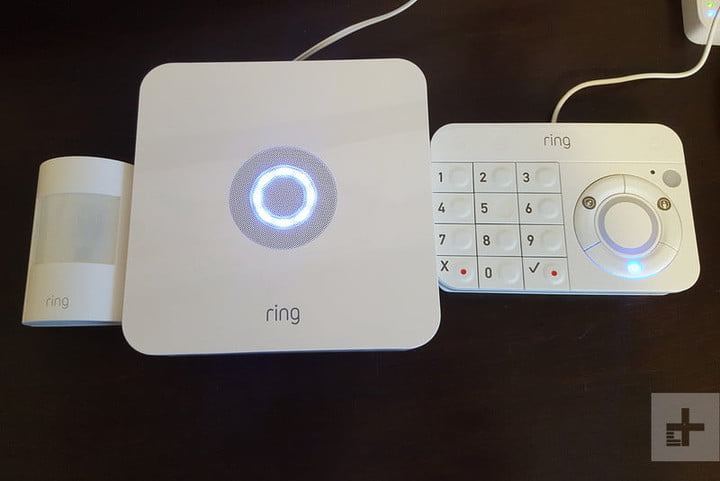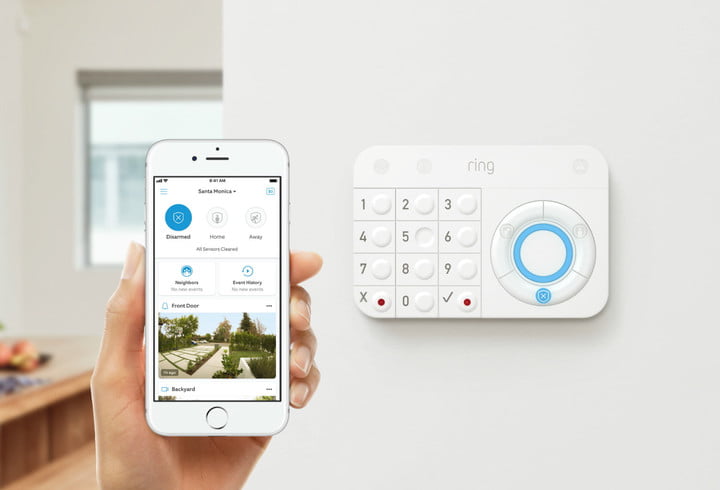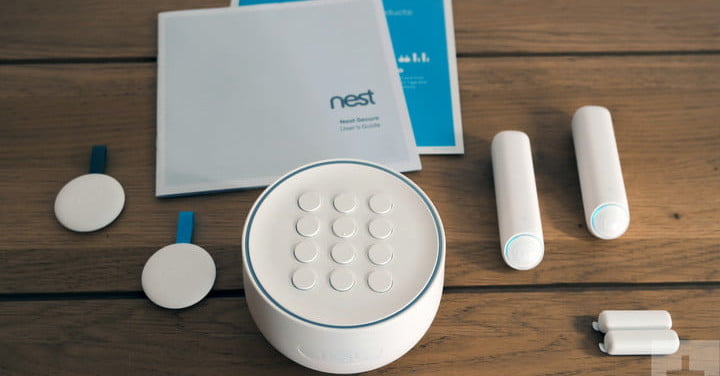Home Security Alarm Comparison: Ring Alarm vs. Nest Secure
Thanks to the advancement of technology, it has become really easy to secure your home and protect it from thieves, intruders, and unwanted guests. A solid home security system gives you peace of mind because whether you’re at home or out of the house, you can keep an eye on things and be alerted if your tech detects anything suspicious. These systems are also really simple to set up, and most don’t require any professional installation whatsoever. When it comes to do-it-yourself home security systems, there are few products favored more than the Nest Secure and Ring Alarm. But which one of these two top contenders is right for your family?
We put these products side by side to give you a comparison of what each one offers, along with a rundown of their similarities and differences. Read on for Ring Alarm vs. Nest Secure: an in-depth look at two of the best home alarm systems on the market. And for a close look at each system one by one, be sure to check out our full review of the Ring Alarm, as well as our full review of the Nest Secure.

Base Price + What’s Included
The base price of the Nest Secure will set you back $399, although we’ve seen it on sale for the holidays. Included in that cost is one alarm, two Nest Detects (a sensor that keeps tabs on doors, windows, and rooms), and 2 Nest Tags (an arming/disarming device that doesn’t require a passcode). As for the Ring Alarm, it will cost you $199, and the price includes one base station, one keypad, one contact sensor, one motion detector, and one range extender. We’ve also seen this unit on sale during the holidays. The Ring Alarm is definitely the more affordable option, and you get more components — and thus, flexibility — for the price.
Ease of Use
Both the Ring Alarm and Nest Secure are easy to install by yourself. You don’t need to purchase professional installation, but both offer that option for an additional charge. Neither platform requires a contract, so you won’t be forced to pay monthly ongoing subscription fees. Both Ring and Nest also offer the ability to control your home security devices via a user-friendly app on your smartphone or tablet, making it simple to check in on things at home when you’re out and about. You’ll also get a notification on your device if the system detects anything out of the ordinary, so you’re always in the know about what’s going on at home.
Professional Monitoring
While you aren’t required to purchase professional monitoring, both Ring and Nest offer you the option of doing so. The purchase of 24/7 monitoring gives you peace of mind that professionals are keeping an eye on your home security on your behalf. The Nest Secure offers professional monitoring for $19 a month if you sign up for a three-year contract, or you can pay month-to-month for $29 a month. The Ring Alarm offers various plans that allow the user to pay by the month or by the year. The Protect Basic Plan is available for $3 a month or $30 a year per camera, while the Protect Plus Plan is $10 a month or $100 a year, and the service can be applied to an unlimited number of security cameras. It also includes professional monitoring.

Cellular Connectivity
What happens if your home Wi-Fi goes out? Luckily, both the Ring and Nest systems offer cellular connectivity, so your alarm will stay online even if there’s a power outage or your Wi-Fi disconnects. Nest charges an additional $5 per month or $50 per year for cellular connectivity, while Ring offers the feature when you purchase the Protect Plus plan. Both systems also incorporate battery backup. While the Nest device will continue running for 12 hours without an external power source, the Ring will last for 24 hours.
Extra Sensors
If you have a big home and want the peace of mind of extra sensors, both Ring and Nest allow you to purchase them. Under Ring, you can get motion sensors for $30 each and door/window sensors for $20 each. Nest, on the other hand, combines motion sensors and door/window sensors into a single device, and one will set you back $49.

Integration with Bigger Smart Homes
When it comes to integrating your home alarms with the rest of your smart home, both Nest and Ring offer the option to purchase extenders. It may take a bit of time to figure out if you need one, since the size, layout, and materials in your home can all make a difference in creating dead zones on your property. Nest’s extender will set you back $70, while Ring’s is just $25.
Pet-Friendly
If you have a dog or a cat, getting a home alarm that won’t be constantly triggered by Fido or Fifi’s movements is a real question you have to consider. The Ring Alarm claims that it won’t detect pets weighing under 50 pounds if the alarm is mounted above seven feet, while pet-friendly motion detection is already integrated into the Nest base station and door sensors.
As for integration with other smart home devices, Nest’s Works with Nest program makes it easy to hook up your Nest Secure home security system with other compatible devices, such as connected lighting, smart thermostats, and security cameras.

Which One Should You Get?
The Nest Secure and Ring Alarm each clearly have their advantages. The Nest comes out ahead in certain factors, most notably its Works with Nest program that provides easy integration with the broader smart home. But the price point of the Ring system is far more attractive, particularly for those who are just starting to build their smart home. If your priority is smart home integration, Nest may be the better option. But if a more affordable base price — and more components included in that base price — is what you’re after, you can’t beat the Ring.




